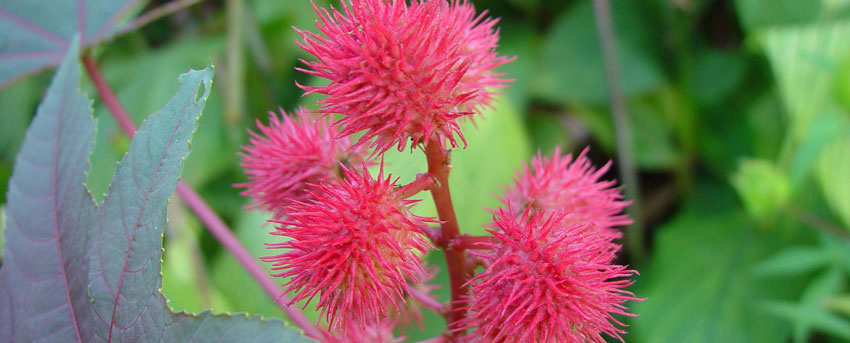Castor Bean

Common Name: castor bean
Botanical Name: Ricinus communis
Native Range: Northeastern Africa to the Middle East
A description of the use of castor bean in De Materia Medica by Pedanius Dioscorides, c. 50-70 AD:
The castor oil is made in this way: Take any number of ripe croton fruits, dry them in the sun, after you have occupied the place with a horde until the outer (enclosing) bark falls off; then collect the meat, place it in a mortar and pound it carefully and place it in a tinned kettle with water and let it dry over an underfired fire. When it has released all the liquid in it, lift the kettle off the fire, scoop up the floating oil with a shell and set it aside. The Egyptians, because they use it abundantly, prepare it differently. After cleaning, they put the croton fruits on a mill and grind them carefully. The milled bring them in wicker baskets and express it with a press. But the fruits are ripe, when they detach themselves from the pods enclosing them. The castor oil is effective against evil grind, scabies and inflammation of the buttocks; also against obstruction and twisting of the uterus, further against ugly wound scars and earache. Blended with the patches it makes them more effective. Drunk, it carries the watery off through the stomach and drives out the worms.
Last updated: 1/3/2020
